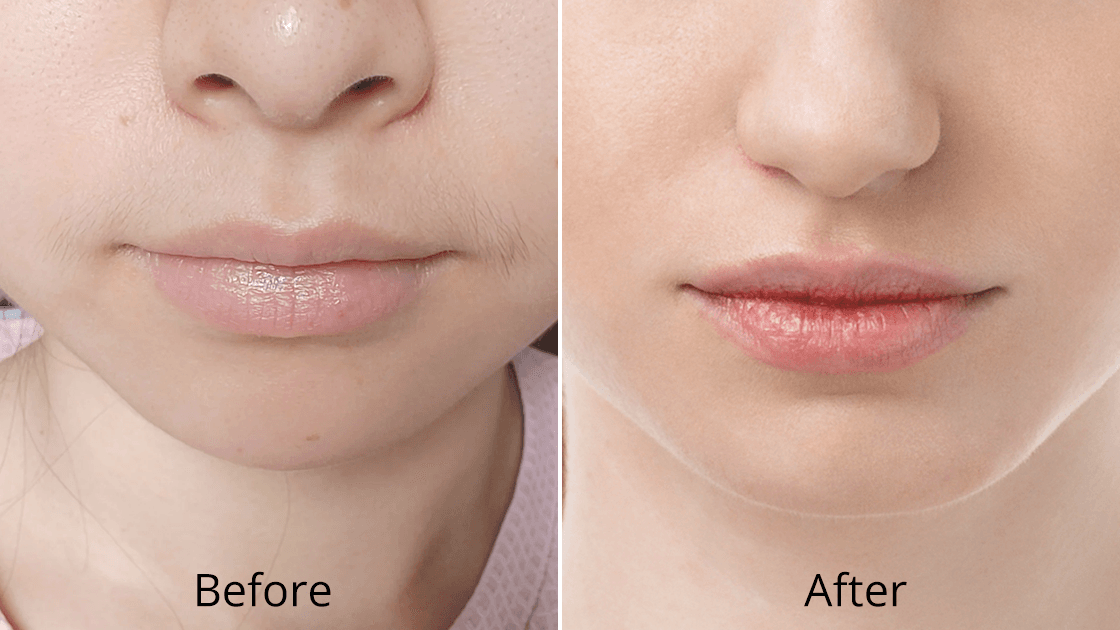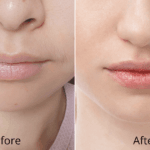1. Introduction: The Slimming Hype Around RF Facial Treatments
In the quest for a sculpted, youthful appearance, radiofrequency (RF) facial treatments have emerged as one of the most sought-after non-invasive cosmetic procedures. Social media feeds are flooded with before-and-after photos claiming dramatic facial slimming effects, leading many to wonder: can RF technology actually make your face smaller? This comprehensive guide explores the scientific reality behind RF facial contouring, examining both the promising possibilities and the important limitations of this innovative aesthetic technology. The appeal of RF treatments lies in their promise of delivering surgical-like results without the risks, downtime, and costs associated with invasive procedures. As consumers increasingly seek effective alternatives to facelifts and surgical contouring, understanding the true capabilities of radiofrequency technology becomes crucial for making informed decisions about aesthetic treatments.
2. Understanding RF Facial Treatments: Aesthetic Science Explained
To comprehend how RF technology might influence facial appearance, it’s essential to understand the fundamental science behind these treatments. Radiofrequency technology represents a sophisticated approach to skin rejuvenation that works at the cellular level to stimulate natural healing and regeneration processes.
2.1 Understanding Radiofrequency Technology
Radiofrequency (RF) technology uses low-frequency electromagnetic waves to generate therapeutic heat deep within the skin. Operating at frequencies between 0.3 to 10 MHz, RF energy penetrates 2–20 mm below the surface, depending on the device. This controlled heat triggers a wound-healing response by targeting the dermal layers while sparing the epidermis. The thermal energy stimulates cell regeneration and tissue remodeling, promoting firmer, smoother skin. Monopolar RF offers uniform heating at deeper levels for collagen contraction and skin tightening. Bipolar and fractional RF, on the other hand, allow for more surface-level or segmented heating, making it possible to customize treatment based on the patient’s skin thickness and desired outcome. Modern systems are designed for precise energy delivery, ensuring safety and efficiency. The primary goal is to boost structural skin integrity through gentle, non-invasive means. As a result, RF has become a popular choice for facial rejuvenation and contouring.
2.2 Collagen and Elastin Activation
RF therapy’s core benefit lies in stimulating collagen and elastin through controlled heat exposure. When RF energy heats tissue to around 60–70°C, collagen fibers immediately contract, resulting in tighter skin. At the same time, the heat activates fibroblasts—cells responsible for new collagen formation (neocollagenesis). Over the next few weeks to months, this process increases collagen types I and III, improving skin structure and elasticity. Elastin fibers also respond to thermal energy by contracting, which enhances firmness right after treatment. Longer-term, RF promotes new elastin synthesis, contributing to smoother and more resilient skin. This dual effect—instant tightening and gradual remodeling—explains the progressive improvements seen after multiple sessions. Additionally, increased cell turnover improves skin tone and texture. Clinical studies show measurable increases in collagen content and high patient satisfaction. Together, these changes restore youthful firmness without invasive procedures.
3. Can RF Make Your Face Look Smaller?
The question of whether RF can genuinely make faces appear smaller requires careful examination of the technology’s actual effects versus marketing claims. While RF treatments can create subtle contouring effects, understanding the mechanisms and limitations is crucial for realistic expectations.
3.1 The Illusion of Slimming: Tightening or Volume Loss?
The perception of facial slimming through RF treatments primarily results from skin tightening rather than actual volume reduction. When loose, sagging skin is tightened and lifted, it creates the illusion of a more defined facial contour. This effect is particularly noticeable in areas where skin laxity has created the appearance of fullness or indefinite boundaries. The immediate tightening effect occurs due to collagen fiber contraction when exposed to controlled heat. This process creates an instant lifting effect that can make the face appear more sculpted and defined. However, this is fundamentally different from actual volume reduction or fat loss, which would require different mechanisms and energy levels. Long-term improvements develop as new collagen formation continues over 3-6 months post-treatment. The newly formed collagen provides structural support that maintains the tightened appearance, creating lasting improvements in facial definition. requires multiple treatments, reaching peak efficacy at approximately 3 months. Downtime and risk of adverse events with RF, however, are minimal.
3.2 Where RF Does Help: Jawline, Jowls, Cheeks
RF treatments demonstrate particular effectiveness in specific facial areas where skin laxity commonly occurs. The jawline represents one of the most responsive areas, where tightening loose skin can create a more defined mandibular border and reduce the appearance of jowls. The researchers found significant improvement in facial skin laxity in all 11 participants, and 73 percent of them had improvements in facial contour. The mid-face region, including the cheek area, also responds well to RF treatments. Tightening of the skin in this area can create a subtle lifting effect that enhances cheekbone definition and reduces the appearance of nasolabial folds. This improvement contributes to an overall more youthful and sculpted facial appearance without actually changing facial volume. Submental area treatment can be particularly effective for addressing the appearance of a double chin or undefined neck-to-jaw transition. The combination of skin tightening and potential mild fat reduction in this area can create significant improvements in facial profile and overall facial proportion.
3.3 Fat Reduction Potential: Real or Rumor?
The ability of RF technology to reduce facial fat remains a topic of ongoing research and debate. RF works by heating collagen in the dermis, which stimulates neocollagenesis and skin tightening, or adipocytes in the subcutis, which causes lipolysis and fat reduction. Some studies suggest that RF energy can indeed cause adipocyte destruction when delivered at appropriate depths and intensities. 2018 study of about 70 women, radiofrequency therapy on facial fat. They found that following 5 weeks of therapy, 90% of the women experienced a reduction in face fat in the area the practitioner applied the treatment. However, the degree of fat reduction achieved through RF is typically modest compared to surgical interventions or other dedicated fat reduction technologies. The mechanism of RF-induced lipolysis involves heating adipose tissue to temperatures that disrupt fat cell membranes, leading to cell death and subsequent elimination through the body’s natural processes. However, achieving effective fat reduction requires precise energy delivery and multiple treatment sessions, and results vary significantly between individuals.
4. How Long Do the Results Last?
Understanding the longevity of RF treatment results is crucial for patients considering this aesthetic option. The duration of effects depends on multiple factors, including individual skin characteristics, age, lifestyle factors, and treatment parameters.
4.1 Temporary vs Cumulative Effects
RF treatments produce both immediate and cumulative effects that develop over different timelines. The immediate tightening effect from collagen contraction is visible immediately after treatment but represents only a fraction of the total potential improvement. This initial result may last several weeks to months, depending on individual factors and skin condition. The cumulative effects develop gradually as neocollagenesis progresses over 3-6 months post-treatment. These improvements tend to be more substantial and longer-lasting than the immediate effects. The newly formed collagen provides structural support that can maintain improvements for extended periods, particularly when combined with appropriate maintenance treatments. With proper skin care, the effects of RF skin tightening can last for one to three years. Maintenance radio frequency treatments are recommended. The variation in duration reflects individual differences in skin quality, age, genetics, and lifestyle factors that influence collagen production and degradation.
4.2 Frequency and Follow-Up Recommendations
Optimal RF treatment protocols typically involve a series of initial treatments followed by maintenance sessions. Initial treatment series usually consist of 3-6 sessions spaced 2-4 weeks apart, allowing time for tissue healing and collagen remodeling between sessions. This approach maximizes cumulative benefits while minimizing the risk of adverse effects. Maintenance treatments are generally recommended every 6-12 months to sustain results. The frequency of maintenance sessions depends on individual factors including age, skin condition, lifestyle, and desired outcome level. Younger patients with good skin quality may require less frequent maintenance, while older patients or those with significant skin laxity may benefit from more regular sessions. Professional assessment is essential for determining appropriate treatment frequency. Factors such as skin response to initial treatments, individual healing capacity, and aesthetic goals all influence the optimal maintenance schedule. Regular follow-up allows for protocol adjustments to maintain optimal results over time.
4.3 Aging and Maintenance
The natural aging process continues despite RF treatments, making maintenance an important consideration for long-term results. As collagen production naturally decreases with age, the benefits of RF treatments may diminish over time without appropriate maintenance. Understanding this progression helps patients develop realistic expectations and treatment plans. Environmental factors such as sun exposure, smoking, and poor skincare can accelerate the breakdown of treatment benefits. Patients who maintain good skincare routines, use sun protection, and avoid damaging lifestyle factors typically experience longer-lasting results from RF treatments. Combining RF treatments with complementary procedures such as topical retinoids, chemical peels, or other non-invasive treatments can help extend and enhance results. This multi-modal approach addresses various aspects of skin aging and can provide more comprehensive and durable improvements than RF treatment alone.

5. Is RF Facial Contouring Safe and Suitable for Everyone?
Safety considerations are paramount when evaluating RF facial treatments. While generally considered safe, understanding the safety profile, contraindications, and potential side effects is essential for informed decision-making.
5.1 Safety Profile of RF Treatments
Clinical studies have demonstrated an excellent safety profile on RF procedures for skin tightening, whether it be for vaginal rejuvenation, facial skin tightening, or body contouring. The non-invasive nature of RF technology contributes to its favorable safety profile compared to surgical alternatives. The controlled nature of RF energy delivery allows for precise treatment with minimal risk of complications when performed by qualified practitioners. Modern RF devices incorporate safety features such as temperature monitoring, impedance feedback, and automatic shut-off mechanisms to prevent overheating and thermal injury. The procedure is generally safe and small group studies often report positive results. The most common side effects are pain, swelling, and redness. In some cases, particularly with at-home treatments, individuals may burn their skin from overexposure. However, this risk is minimized when treatments are performed by trained professionals using appropriate protocols.
5.2 Who Should Avoid RF Facial Slimming?
Certain individuals should avoid RF treatments due to contraindications or increased risk of adverse effects. Patients with active infections, open wounds, or inflammatory skin conditions in the treatment area should postpone treatment until these conditions resolve. Pregnant and breastfeeding women are generally advised to avoid RF treatments as a precautionary measure. Individuals with certain medical conditions may not be suitable candidates for RF treatments. These include patients with pacemakers or other implanted electronic devices, those with metal implants in the treatment area, and individuals with a history of keloid scarring or abnormal wound healing. Patients with unrealistic expectations or body dysmorphic disorder may also be poor candidates for treatment. Age considerations also play a role in treatment suitability. While RF treatments can be beneficial for various age groups, very young patients with minimal skin laxity may not see significant benefits, while very elderly patients with severe skin laxity may require more aggressive treatments or surgical interventions for optimal results.
5.3 Side Effects and How to Manage Them
Common side effects:
Temporary redness or swelling (usually lasts 24–48 hours)
Occasional mild rash or skin changes
Aftercare tips:
Avoid sun exposure and harsh skincare products for a few days
Use cool compresses to reduce swelling or discomfort
Apply gentle moisturizers to soothe dryness or irritation
Makeup can be applied immediately after treatment
Resume daily activities with minimal downtime
Rare but serious complications:
Burns, scarring, or pigmentation changes
Most often occur when performed by untrained practitioners or with incorrect settings
Prevention:
Choose qualified and experienced professionals
Follow all post-treatment care instructions closely
6. Comparing RF to Other Facial Slimming Options
Understanding how RF compares to alternative facial slimming treatments helps patients make informed decisions about the most appropriate option for their needs and goals.
6.1 RF vs HIFU (High-Intensity Focused Ultrasound)
High-Intensity Focused Ultrasound (HIFU) represents another non-invasive option for facial contouring and skin tightening. HIFU delivers focused ultrasound energy to deeper tissue layers than RF, potentially providing more dramatic lifting effects. However, HIFU treatments are typically more uncomfortable and may require longer recovery periods. RF treatments offer greater versatility in terms of treatable areas and skin types. While HIFU may provide more dramatic results in some cases, RF treatments can be more easily customized to individual needs and tolerance levels. The choice between RF and HIFU often depends on specific treatment goals, patient comfort preferences, and individual anatomy. Combination approaches utilizing both RF and HIFU technologies are becoming increasingly popular, allowing practitioners to address different tissue layers and achieve comprehensive facial rejuvenation. This combined approach can provide synergistic effects while minimizing the limitations of each individual technology.
6.2 RF vs Injectable Contouring (Botox, Fillers)
Injectable treatments such as Botox and dermal fillers offer different mechanisms for facial contouring and rejuvenation. Botox can create slimming effects by relaxing the masseter muscles, leading to a reduction in jaw width over time. This approach directly addresses muscle bulk rather than skin laxity. Dermal fillers can enhance facial contours by adding volume to specific areas, creating the illusion of improved facial proportions. However, fillers add volume rather than reducing it, making them less suitable for patients seeking a genuinely slimmed appearance. The temporary nature of most fillers also requires regular maintenance treatments. RF treatments offer longer-lasting results compared to most injectable options, with effects typically lasting 1-3 years versus 3-12 months for injectables. However, injectables can provide more immediate and dramatic changes in facial appearance, making them attractive for patients seeking quick results.
6.3 RF vs Facial Lipolysis
Facial lipolysis procedures, including injectable fat dissolvers and surgical fat removal, specifically target adipose tissue for volume reduction. These treatments can provide more dramatic slimming effects compared to RF technology, particularly in patients with significant facial fat deposits. Injectable lipolysis treatments such as deoxycholic acid can effectively reduce submental fat, creating significant improvements in facial profile. However, these treatments are limited to specific areas and may require multiple sessions with potentially significant swelling and downtime. RF treatments offer a more comprehensive approach to facial contouring, addressing both skin laxity and potentially modest fat reduction. While the fat reduction effects may be less dramatic than dedicated lipolysis procedures, RF treatments provide additional benefits such as skin tightening and texture improvement.
7. Real Results and Clinical Backing
Scientific evidence and clinical studies provide important insights into the effectiveness and limitations of RF treatments for facial contouring and rejuvenation.
7.1 What Studies Say About RF for Facial Slimming
Most studies demonstrated radiofrequency treatment of acne, scars, or facial rhytids had positive subjective improvement ratings. Objective studies demonstrated reduction of acne, decreased scarring, lifting effect, improvement in elasticity and collagen, volumetric fat changes. The scientific literature consistently supports RF technology’s effectiveness for skin tightening and facial rejuvenation. The results showed that the main physiological effect is to stimulate collagen synthesis, confirming the primary mechanism of action for RF treatments. This collagen stimulation provides the foundation for both immediate and long-term improvements in facial appearance. Clinical studies have demonstrated measurable improvements in facial contour and skin laxity following RF treatments. All patients reported improvement in lower facial laxity immediately after treatment, indicating consistent patient satisfaction with treatment outcomes. However, the degree of improvement varies significantly between individuals and depends on factors such as age, skin condition, and treatment parameters.
7.2 Before-and-After Expectations
Realistic expectations are crucial for patient satisfaction with RF treatments. Typical improvements include modest skin tightening, enhanced facial definition, and improved skin texture. The effects develop gradually over several months, with peak results typically visible 3-6 months post-treatment. Patients should expect subtle rather than dramatic changes in facial appearance. While RF treatments can create noticeable improvements in facial contour and skin quality, they cannot replicate the dramatic results achieved through surgical procedures. The natural-looking results of RF treatments are often considered an advantage for patients seeking subtle enhancement. Individual factors such as age, skin condition, and genetic factors significantly influence treatment outcomes. Younger patients with mild skin laxity typically achieve better results than older patients with severe skin aging. Pre-treatment consultation and assessment are essential for establishing appropriate expectations and treatment plans.
7.3 Expert Opinions from Dermatologists and Aesthetic Doctors
Dermatologists and aesthetic medicine practitioners generally regard RF treatments as valuable tools for non-invasive facial rejuvenation. The technology’s safety profile and minimal downtime make it attractive for patients seeking alternatives to surgical procedures. Professional consensus emphasizes the importance of proper patient selection and realistic expectation management. RF treatments work best for patients with mild to moderate skin laxity who seek subtle improvements rather than dramatic transformation. Combining RF with other treatments often provides more comprehensive results than single-modality approaches. Ongoing technological advances continue to improve RF treatment effectiveness and safety. Newer devices offer better energy delivery control, improved patient comfort, and enhanced treatment precision. These developments suggest that RF technology will continue to evolve and improve as a facial contouring option.
8. Final Thoughts: Is RF the Secret to a Smaller-Looking Face?
After examining the scientific evidence and clinical reality of RF treatments, it’s clear that while this technology can create subtle facial contouring effects, it’s not a magic solution for dramatically reducing facial size.
8.1 Managing Expectations and Reality
The effectiveness of RF treatments for creating a smaller-looking face depends largely on the underlying cause of facial fullness. For patients whose concerns stem from skin laxity, mild fat deposits, or lack of definition, RF treatments can provide meaningful improvements. However, those seeking dramatic volume reduction or structural changes may require alternative approaches. Success with RF treatments requires realistic expectations and understanding of the technology’s limitations. The subtle, natural-looking results appeal to many patients, particularly those seeking to enhance their natural features rather than dramatically alter their appearance. Patient satisfaction tends to be highest when expectations align with achievable outcomes. Professional consultation is essential for determining whether RF treatments are appropriate for individual goals and concerns. Qualified practitioners can assess skin condition, discuss realistic outcomes, and recommend the most suitable treatment approach based on individual needs and preferences.
8.2 When RF Works Best (And When It Doesn’t)
RF treatments work best for patients with mild to moderate skin laxity who seek subtle improvements in facial definition and skin quality. Ideal candidates are typically in their 30s to 50s with good overall skin health and realistic expectations about treatment outcomes. The technology is particularly effective for addressing early signs of aging such as mild jowling, loss of jawline definition, and skin texture irregularities. Patients with these concerns often achieve satisfying results with RF treatments, experiencing improved facial contour and enhanced skin quality. RF treatments may not be suitable for patients with severe skin laxity, significant facial fat deposits, or those seeking dramatic changes in facial appearance. These individuals may require surgical interventions or alternative treatments to achieve their desired outcomes.
8.3 The Bottom Line: Subtle Contouring, Not Surgical Reshaping
RF technology offers a valuable middle ground between invasive surgical procedures and less effective topical treatments. While it cannot replicate the dramatic results of surgical facial contouring, it provides meaningful improvements with minimal risk and downtime. The key to success with RF treatments lies in appropriate patient selection, realistic expectations, and proper treatment protocols. When used appropriately, RF technology can create subtle but noticeable improvements in facial appearance that enhance natural beauty without looking artificial or overdone. For patients seeking non-invasive options for facial enhancement, RF treatments represent a scientifically-backed approach that can deliver satisfying results when expectations align with the technology’s capabilities.
9. FAQs
No. RF treatments work by tightening skin and stimulating collagen—not altering bone structure. The “smaller” look comes from firmer skin and sharper contours, especially around the jawline and cheeks. Think definition, not drastic transformation.
You might notice some immediate tightening after the first session, but visible slimming usually appears after 3–6 sessions, depending on your skin type and age. It’s a marathon, not a sprint.
Mostly, it lifts and tightens. Facial RF uses lower energy than body contouring RF, so fat melting is minimal. However, better lymphatic drainage post-treatment can make puffiness disappear, creating a more sculpted effect.
It can reduce the appearance of a double chin by tightening loose skin and mildly stimulating fat breakdown. For permanent removal, more invasive options like lipolysis are more effective.
RF isn’t just spa fluff—it’s backed by clinical studies showing increased collagen and elastin production. It’s used by dermatologists worldwide for real, measurable tightening, not just glow-up marketing.
Absolutely. Younger users often choose RF for prevention—to slow collagen loss and maintain firm contours. Starting early can delay sagging and help you keep that naturally snatched look longer.
10. Scientific References Supporting RF Facial Treatments
- How RF Energy Elevates Your Cheekbone Naturally
- Can RF Replace Fillers? What You Need to Know
- Radiofrequency facial rejuvenation: Evidence-based effect
- The Use of Radiofrequency in Aesthetic Surgery
- The Efficacy and Safety of Synchronized Radiofrequency and High Intensity Facial Electrical Stimulation in Improving Facial Skin Laxity and Quality in Asians








